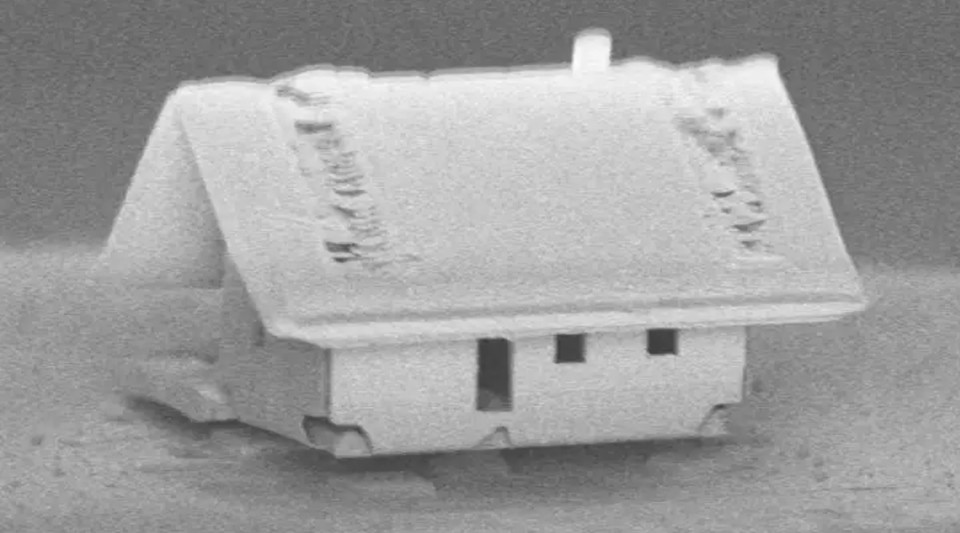The smallest house in the world under the scanning electron microscope. (Image Source: Femto-St)
Living in houses that are as small as possible has long since become a trend among some hip people. But as cute as the tiny houses are, nothing can compare to what scientists at the Femto-ST Institute in France recently built (via Journal of Vacuum Science & Technology)
The researchers can rightly claim to have built the smallest house in the world. And it’s so small it’s virtually impossible to see with the naked eye. It measures just 20 microns in length – exactly 20 µm x 10 µm x 15 µm.
Just for comparison: 1 micrometer corresponds to one thousandth of a millimeter. In other words, it would take around 5,000 of the little houses to fill up just one square millimeter.
In order to pave an apartment of 60 square meters with it, you would need around 300 billion of the tiny dwellings. How did the researchers manage to build so small?
This is how the mini house was made
A scanning electron microscope, a gas injection system and a particularly small robot with six degrees of freedom were used. Thin silicon oxide membranes were cut, etched, folded and then assembled into three-dimensional microstructures on a cleaved glass fiber.
The accuracy with which the work was done is 10 nanometers. These are orders of magnitude that we otherwise only know from the production of microchips.
What is the mini house supposed to be good for? The experiment wanted to show that it is possible to build complex three-dimensional microsystems from different materials. With the help of so-called sputtering, a special atomization process at the atomic level, it is possible to combine any materials with one another.
The researchers propose using their technology to implement optical functions for capturing light. They name nanoantennas and three-dimensional biosensors as examples.
What do you think of the mini house? Is this just a nice gimmick, or do you think that’s the basis for exciting technologies? Write it to us in the comments!


 What’s happening with AI? Researcher explains why you can look forward to more creative NPCs, competition for ChatGPT and hot dog tomatoes
What’s happening with AI? Researcher explains why you can look forward to more creative NPCs, competition for ChatGPT and hot dog tomatoes Cowboy launches new on-demand service: That’s what’s inside
Cowboy launches new on-demand service: That’s what’s inside The new 4K Fire TV stick is now brutally reduced and transforms your old television into a smart TV
The new 4K Fire TV stick is now brutally reduced and transforms your old television into a smart TV The best mouse I’ve ever had, convinces me for gaming, work and home office and is different than all its predecessors!
The best mouse I’ve ever had, convinces me for gaming, work and home office and is different than all its predecessors! The first smart glasses suitable for everyday use that you can buy
The first smart glasses suitable for everyday use that you can buy